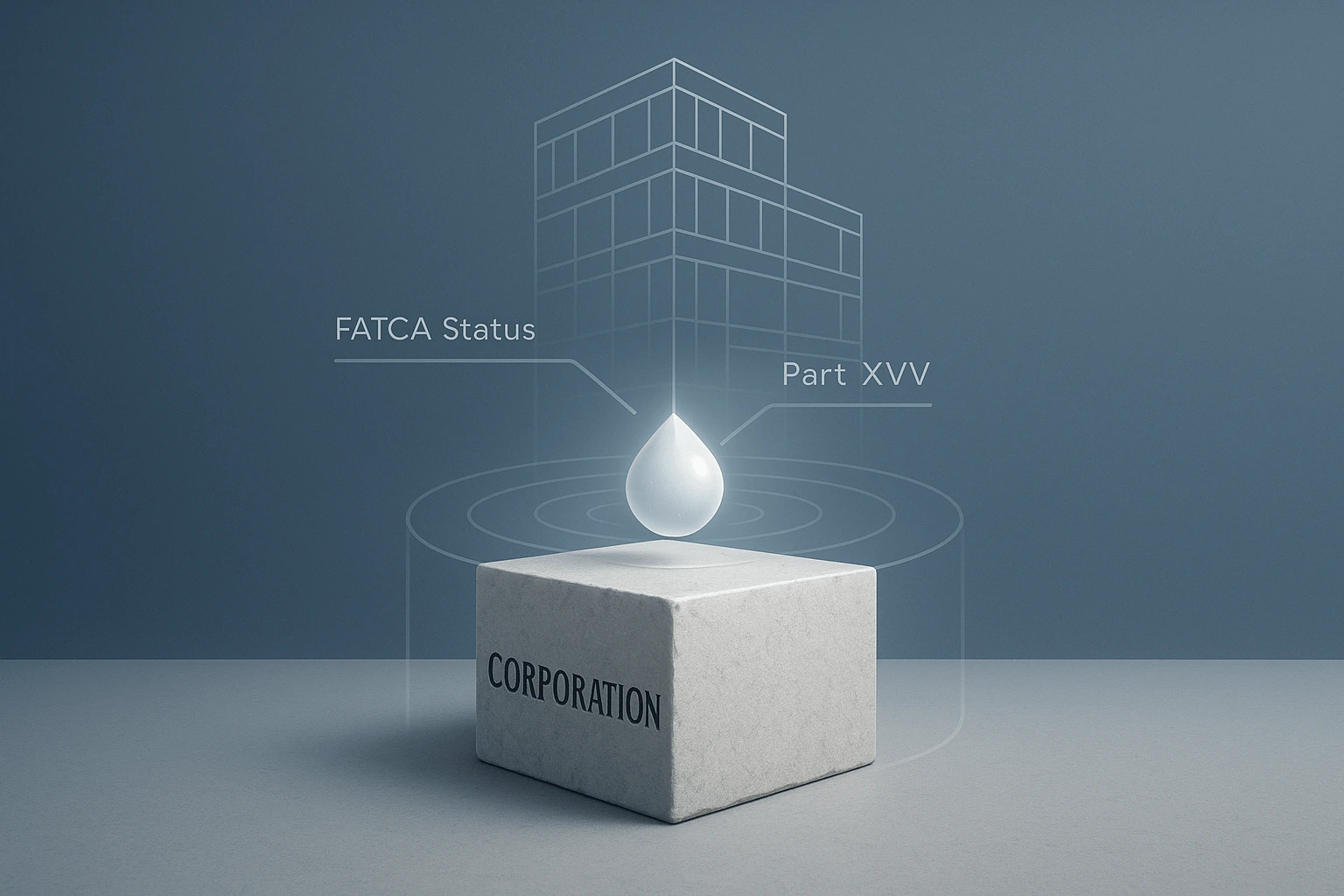W-8BEN-E for Corporations: A Step-by-Step Filing Guide

If your organization is a corporation, a limited liability company (LLC), or a joint-stock company, your path for filling out Form W-8BEN-E will be the most standard. The 'Corporation' status is the most common choice for legal entities.
Although this path is more straightforward compared to complex trusts or 'transparent' structures, it still requires careful attention, especially when choosing the FATCA status. This guide will help you confidently navigate all the key steps.
In Part I, Line 4, you select the 'Corporation' status if your organization is a legal entity that exists separately from its owners (shareholders). This applies to most standard business structures, such as:
Who Chooses the 'Corporation' Status?
- Corporations (Corp., Inc.)
- Limited Liability Companies (LLC) that are classified as corporations for U.S. tax purposes.
- Joint-stock companies (JSC, AG, SA).
By selecting this status, you confirm that your company is an independent legal entity.
The Main Path for a Corporation on Form W-8BEN-E
For a corporation, the form-filling process is logical and sequential.
Step 1: Select Chapter 3 Status
In Part I, Line 4, you check the box next to 'Corporation.' Unlike trusts or partnerships, this choice does not require you to answer the hybrid status question in Line 5.
Step 2: Determine FATCA Status in Chapter 4
This is the most critical next step. In Part I, Line 5, you must determine which category your corporation belongs to for FATCA purposes. Here are the three most common options for non-financial corporations:
If you conduct an active business (most likely case)
You select the 'Active NFFE' (Active Non-Financial Foreign Entity) status. This is your choice if less than 50% of your company's income is passive (interest, dividends, royalties) and less than 50% of its assets are held to generate such income. This status requires completing Part XXV.
If your company's stock is publicly traded
You select the 'Publicly traded NFFE or NFFE affiliate of a publicly traded corporation' status. This choice requires completing Part XXIII.
You select the 'Passive NFFE' status. This applies to companies whose income (over 50%) comes from passive sources. This choice requires completing Part XXVI and possibly Part XXIX (if you have substantial U.S. owners).
If your income is predominantly passive
Claiming Tax Treaty Benefits (Part III)
Although choosing the 'Corporation' status does not force you to complete Part III via the hybrid question, you should still do so to claim reduced tax rates under the tax treaty between your country and the U.S. This is particularly relevant if you receive income in the form of dividends or royalties. In Part III, Line 14b, there are options created specifically for corporations, such as 'Publicly traded corporation' or 'Company that meets the ownership and base erosion test.'
Make the complex simple
The typical path for a standard service or trading company on Form W-8BEN-E looks like this: Corporation (Part I, Line 4) → Active NFFE (Part I, Line 5) → Complete Part XXV → Complete Part III to claim benefits. This is the most direct and logical path for most non-U.S. businesses. Our online builder is designed to make this process even simpler. It will ask you simple questions about your company's activities and help you choose the correct FATCA status, automatically guiding you to the necessary sections. Try our service and fill out Form W-8BEN-E quickly and with confidence.
Try our W-8BEN-E Generator